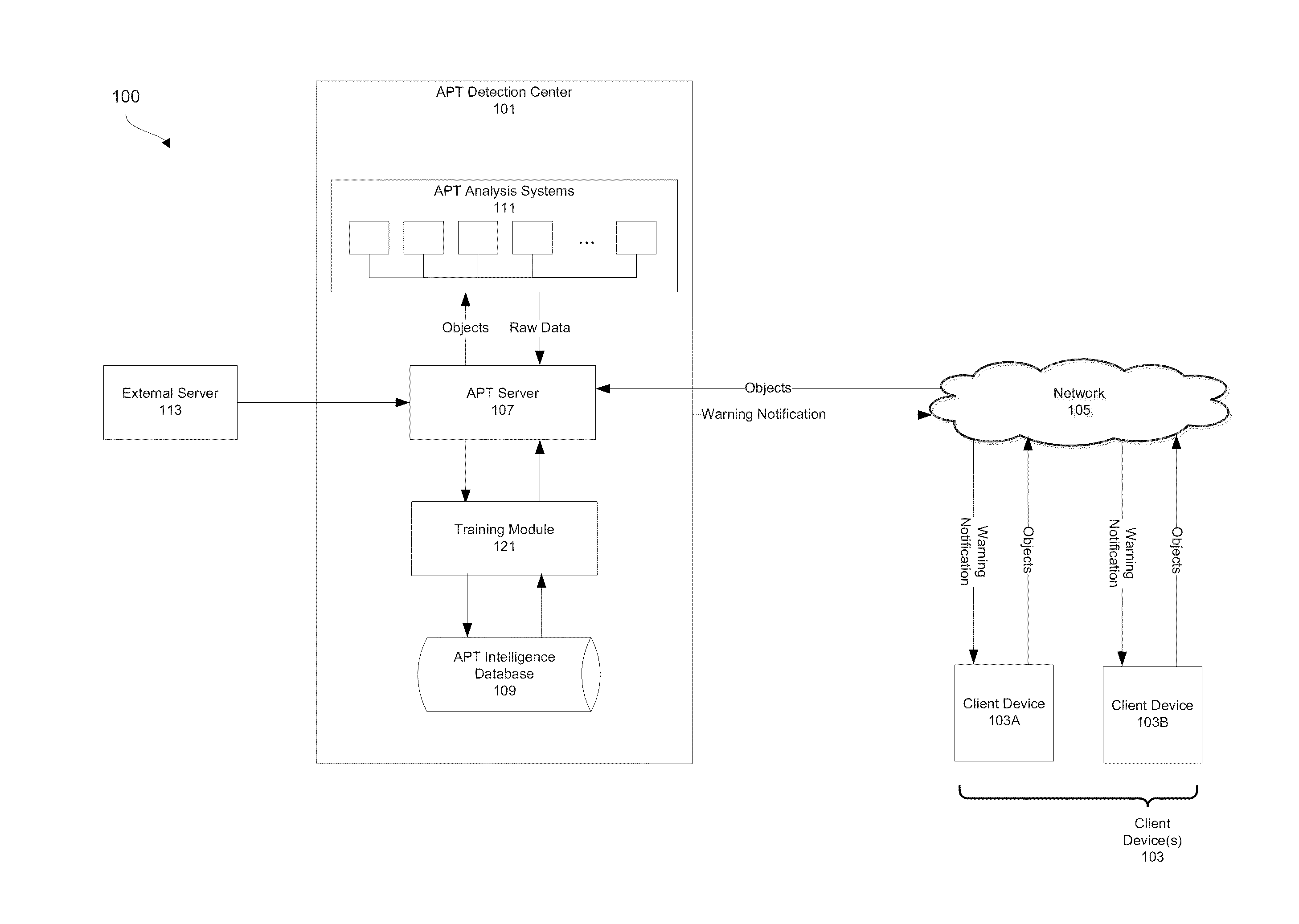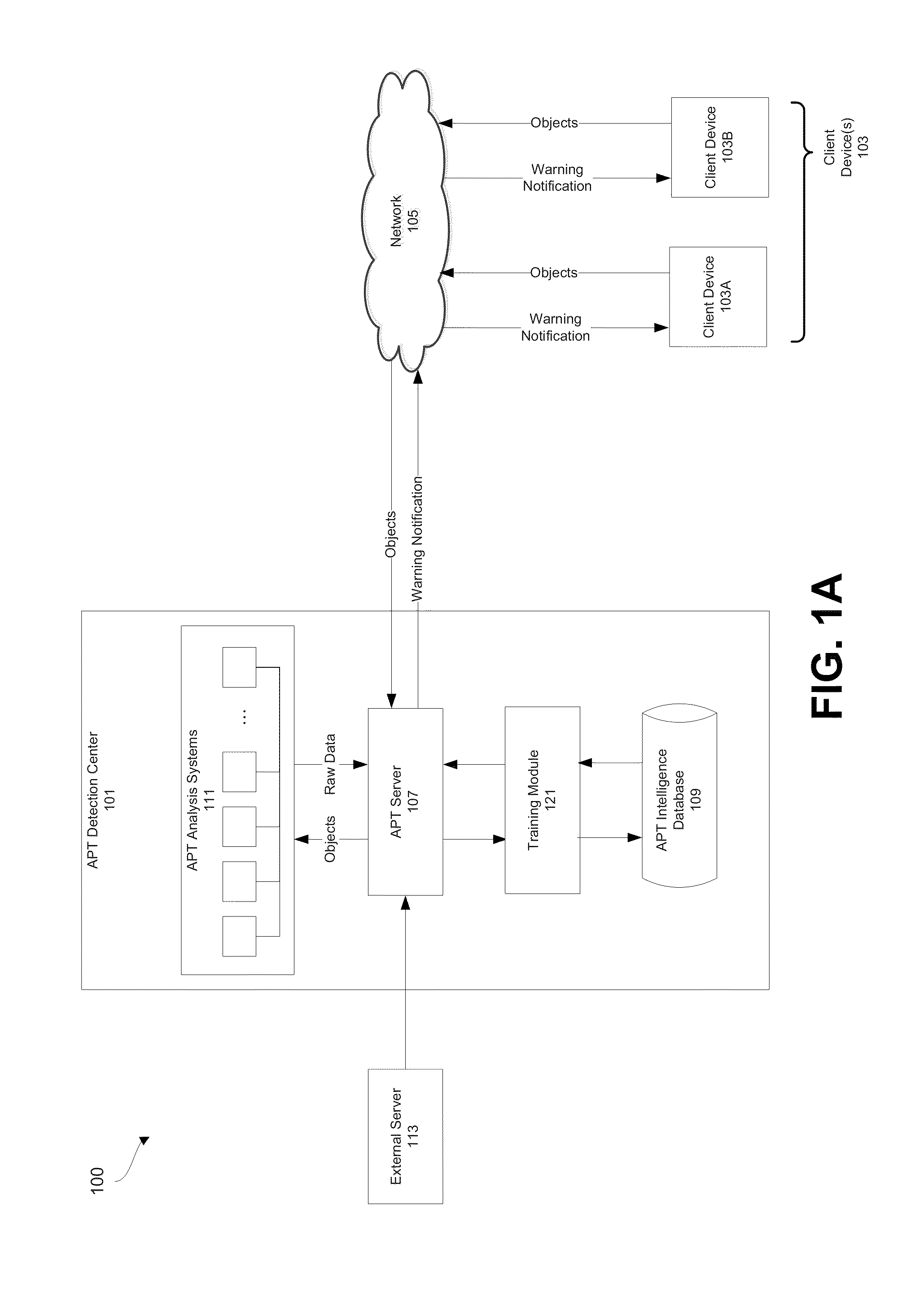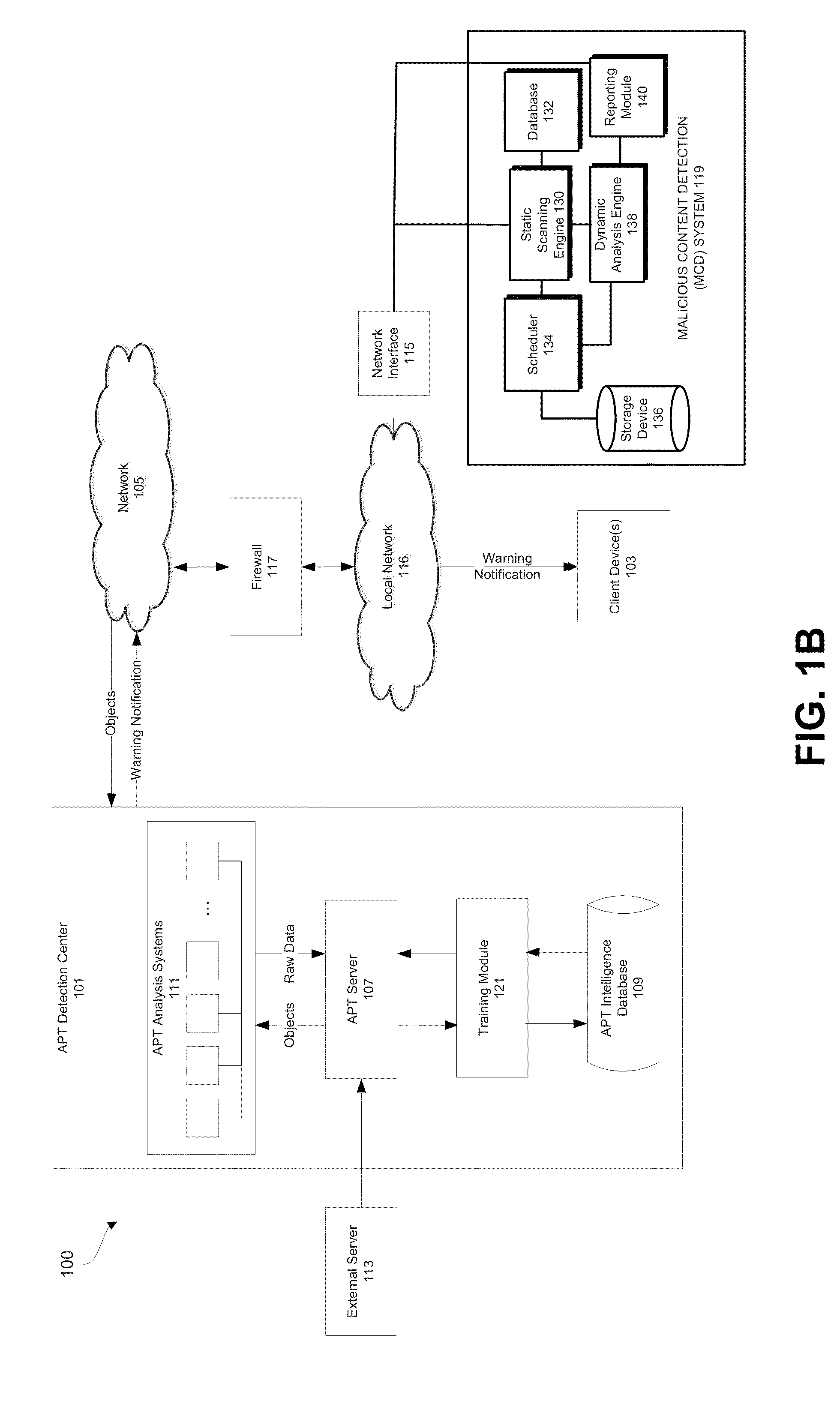Advanced persistent threat (APT) detection center
a persistent threat and detection center technology, applied in the field of data security, can solve problems such as adverse influence or attack, system failure to properly identify the attack and associated objects as apts, and malicious software (malware) becoming a pervasive problem for internet users
- Summary
- Abstract
- Description
- Claims
- Application Information
AI Technical Summary
Benefits of technology
Problems solved by technology
Method used
Image
Examples
Embodiment Construction
[0016]I. Overview
[0017]In one embodiment of the invention of an Advanced Persistent Threat (APT) detection center is provided that analyzes one or more objects received from a client device 103 or another digital device. These objects may be generally defined as selected portions of content under analysis that may contain advanced persistent threats (APTs). An APT is a type of malware that is directed at a particular target and seeks to surveil, extract, and / or manipulate data to which the defined target would have access. An APT attacker may utilize non-public or non-commonly known information to support the APT attack. The targets may include individuals and organizations with high value information (e.g., classified or sensitive defense secrets and information that would be considered trade secrets or intellectual property). In some instances, APTs may seek to perform nation state attacks for the purposes of political terrorism or espionage.
[0018]The APT detection center may dete...
PUM
 Login to View More
Login to View More Abstract
Description
Claims
Application Information
 Login to View More
Login to View More - R&D
- Intellectual Property
- Life Sciences
- Materials
- Tech Scout
- Unparalleled Data Quality
- Higher Quality Content
- 60% Fewer Hallucinations
Browse by: Latest US Patents, China's latest patents, Technical Efficacy Thesaurus, Application Domain, Technology Topic, Popular Technical Reports.
© 2025 PatSnap. All rights reserved.Legal|Privacy policy|Modern Slavery Act Transparency Statement|Sitemap|About US| Contact US: help@patsnap.com



